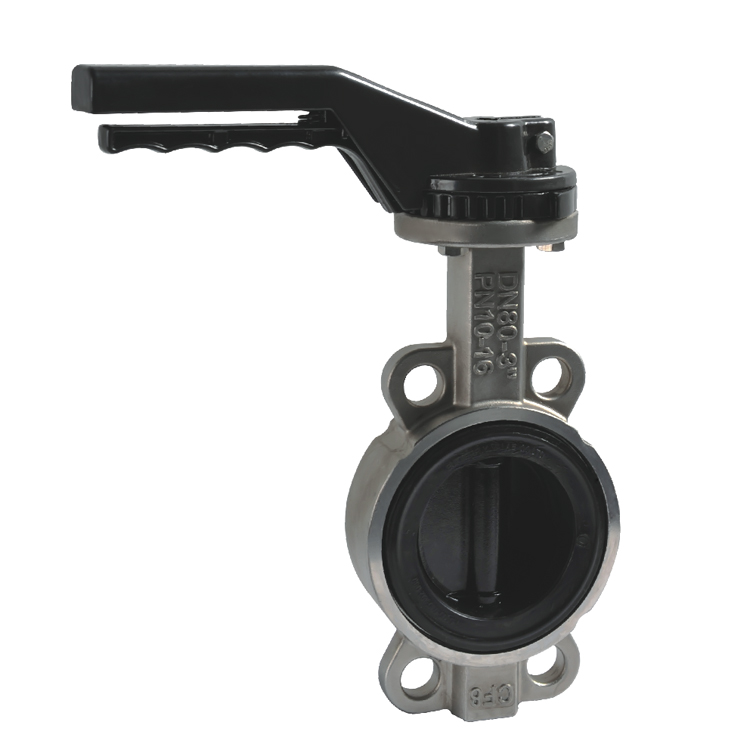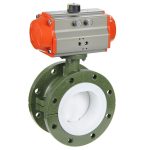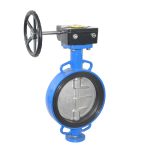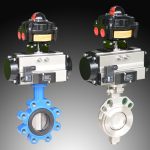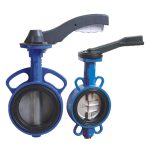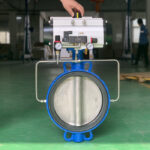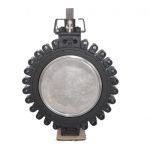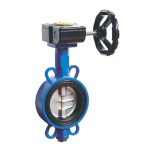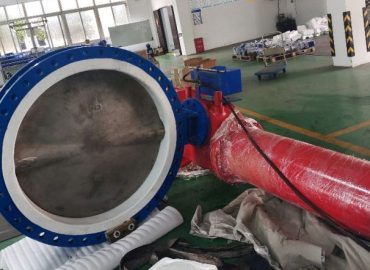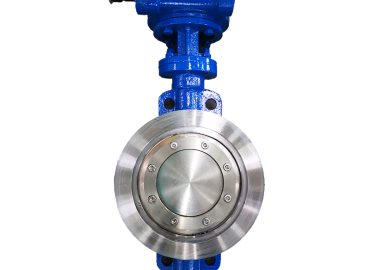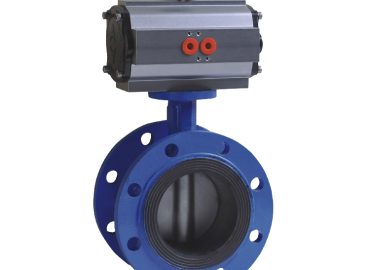Butterfly valves play a critical role in pipelines and fluid control systems, ensuring the efficient and precise regulation of fluid flow. While the valve’s internal components are fundamental to its functionality, the design of the butterfly valve handle also significantly impacts its overall performance. The handle is the primary user interface, enabling operators to control the valve and optimize system performance. This article will delve into the various aspects of butterfly valve handle design, examining how factors such as material choice, ergonomics, and aesthetics can impact performance, and provide guidance on selecting the right handle design for your specific application.
Introduction
The design of a butterfly valve handle is a crucial aspect that can significantly impact the performance and efficiency of fluid control systems. A well-designed handle allows operators to smoothly and precisely control valve, ensuring optimal regulation of fluid flow within pipelines. Several factors contribute to the effectiveness of a butterfly valve handle, including its material, ergonomics, and overall design. The choice of material is essential for durability, corrosion resistance, and weight considerations, with options such as plastic, aluminum, and stainless steel offering varying benefits and drawbacks depending on the application’s environment and requirements. Ergonomic design is another critical factor, as it directly affects the safety and ease of operation for the user. A properly designed handle should consider aspects like shape, size, and grip to reduce hand fatigue, improve grip strength, and enable rapid valve adjustments when needed. Additionally, the overall design of the handle plays a role in the accessibility and visibility of the valve, which can influence maintenance and the ability to withstand wear and tear over time. Finally, aesthetics and branding should not be overlooked, as they can impact the overall appearance of a fluid control system or pipeline, and enhance the visibility and recognition of a valve manufacturer or supplier. In summary, the design of a butterfly valve handle is a vital element that directly affects its performance, and careful consideration should be given to ensure the selection of the most suitable handle for each specific application.
Briefly introduce the concept of butterfly valves as a crucial component in pipelines and fluid control systems
Butterfly valves are an essential component in pipelines and fluid control systems, responsible for regulating the flow of liquids and gases within various industrial and commercial applications. These versatile valves utilize a disc mounted on a rotating shaft that, when turned, either allows or restricts fluid flow through the pipeline. The simplicity of their design, combined with their durability and cost-effectiveness, makes butterfly valves an attractive choice for many industries, including water treatment, chemical processing, and HVAC systems. As a crucial component in managing fluid flow, butterfly valves contribute significantly to the overall performance, safety, and efficiency of pipelines and fluid control systems.

Acknowledge the importance of butterfly valve handle types design in achieving optimal performance
The design of a valve handle plays a pivotal role in ensuring optimal performance and efficiency in fluid control systems. As the primary interface between the operator and the valve, the handle enables precise control over the opening and closing of the valve, directly impacting the regulation of fluid flow. A well-designed handle not only ensures ease of operation but also contributes to the long-term durability and reliability of the valve system. By carefully considering factors such as material, ergonomics, and overall design, an effective valve handle can significantly enhance the performance of butterfly valves, ultimately leading to improved safety and efficiency within pipelines and fluid control systems.
Present the goal of the blog post: to explore the impact of butterfly valve handle types design on performance and offer insights into selecting the right handle for specific applications
The goal of this blog post is to delve into the critical aspects of butterfly valve handle design and its influence on overall performance. By examining factors such as material selection, ergonomics, and overall design, we aim to provide readers with a comprehensive understanding of how these elements affect the functionality and efficiency of butterfly valves. Furthermore, we will offer valuable insights and guidance on choosing the most suitable handle design for specific applications, ensuring optimal performance and longevity of fluid control systems. Through this exploration, we hope to empower our readers to make informed decisions when selecting butterfly valve handles, ultimately contributing to the successful operation and maintenance of their pipelines and fluid control systems.
Discuss the Purpose of butterfly valve handle types
Butterfly valve handles serve a critical function in fluid control systems, as they enable operators to regulate the flow of liquids and gases within pipelines and other industrial applications. These handles are connected to the valve’s rotating shaft, which allows for precise control over the positioning of the internal disc. As the handle is turned, the disc either permits or restricts fluid flow through the pipeline, ensuring accurate regulation based on the specific needs of the system. The purpose of butterfly valve handles extends beyond mere functionality; their design plays a significant role in ensuring ease of operation, reliable performance, and long-term durability. A well-designed handle should be ergonomic, allowing for comfortable and efficient use by operators while minimizing fatigue and potential strain. Additionally, the choice of materials and overall construction should be carefully considered to withstand the demands of various environments and applications. By understanding the purpose of butterfly valve handles and the factors that contribute to their effectiveness, users can make informed decisions when selecting the ideal handle for their particular needs, ultimately contributing to the optimal performance and efficiency of their fluid control systems.
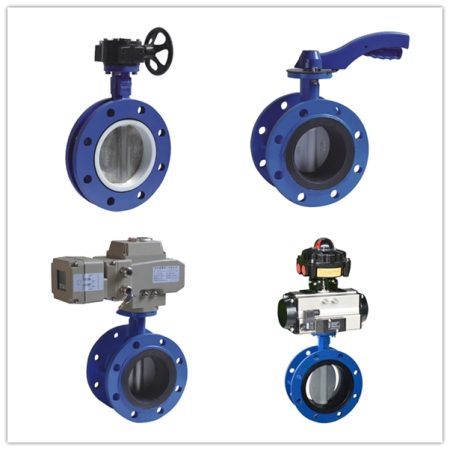
Evaluate the Performance Impact of Handle Materials
The choice of handle materials for butterfly valves can have a significant impact on the overall performance and longevity of the fluid control systems. Different materials offer varying levels of durability, corrosion resistance, and weight, all of which can influence the valve’s operation and maintenance. Common handle materials include plastic, aluminum, and stainless steel, each presenting its own set of advantages and drawbacks depending on the specific application requirements. Plastic handles, for example, are lightweight and resistant to corrosion, making them suitable for use in non-aggressive environments where weight and ease of operation are crucial factors. However, they may lack the strength and durability required for more demanding applications. Aluminum handles provide a balance between weight and durability, offering a higher level of strength compared to plastic while still maintaining a relatively low weight. This makes them well-suited for a wide range of applications, including those with moderate environmental challenges. Stainless steel handles, on the other hand, boast exceptional durability and corrosion resistance, making them ideal for use in harsh environments or applications involving aggressive fluids. Despite their increased strength and resilience, stainless steel handles tend to be heavier, which can impact ease of operation and overall system weight. In conclusion, evaluating the performance impact of handle materials is essential when selecting a butterfly valve handle, as it directly affects the valve’s functionality, longevity, and suitability for specific environments and applications.
Analyze the Effect of Handle Design on Operation and Maintenance
The design of a butterfly valve handle plays a critical role in determining the ease of operation and maintenance of fluid control systems. A well-thought-out handle design should take into account several factors, including ergonomics, accessibility, visibility, and durability. Ergonomics is a vital consideration, as it directly affects the comfort and efficiency of the operator while using the valve. A properly designed handle should have an optimal shape, size, and grip to minimize hand fatigue, improve grip strength, and enable rapid valve adjustments when necessary. Accessibility is another crucial aspect, as it influences the ease with which operators can reach and maneuver the handle, particularly in tight spaces or complex pipeline configurations. Visibility is essential for monitoring valve performance and identifying potential issues, so incorporating features such as position indicators or color-coding can aid in the quick assessment of valve status. Durability is also a key factor, as the handle’s ability to withstand wear and tear over time can impact the overall reliability and longevity of the fluid control system. By carefully considering these aspects when designing a butterfly valve handle, manufacturers can ensure that their products provide optimal performance and require minimal maintenance, ultimately contributing to the efficiency and success of fluid control systems across various applications and industries.
Consider the Ergonomics of Handle Design
The ergonomics of butterfly valve handle design is a critical aspect to consider, as it directly influences the user’s comfort, efficiency, and overall experience during operation. A well-designed, ergonomic handle can significantly improve the ease and precision with which operators can control the valve, leading to better performance and reduced potential for errors. Several factors contribute to the ergonomics of a handle design, including its shape, size, grip, and positioning. The shape of the handle should be designed to fit comfortably in the user’s hand, allowing for a natural and secure grip. This can help reduce hand fatigue and ensure that the operator maintains proper control over the valve during adjustments. The size of the handle is also important, as a handle that is too small or large can be challenging to maneuver and may lead to strain or discomfort during prolonged use. The grip material and texture should provide adequate friction to prevent slippage, especially under wet or oily conditions, while remaining comfortable to hold. Finally, the positioning of the handle on the valve should allow for easy access and operation, taking into consideration the needs of users with varying hand sizes and physical abilities. By prioritizing ergonomics in handle design, manufacturers can create butterfly valves that offer a more user-friendly experience, ultimately contributing to enhanced system performance and increased operator satisfaction.
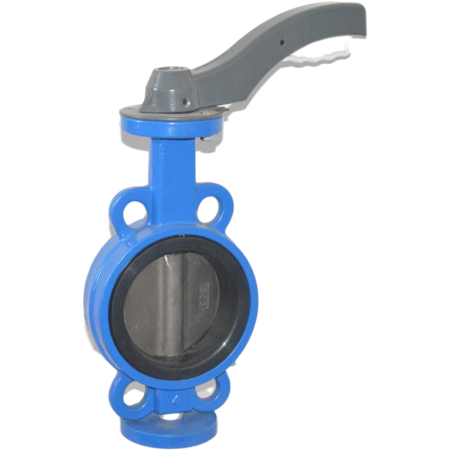
Weigh the Importance of Aesthetics and Branding
While the primary focus of butterfly valve handle design should be on functionality and ergonomics, the importance of aesthetics and branding should not be overlooked. A visually appealing and well-branded handle can contribute to the overall perception of a product’s quality and value, potentially influencing purchasing decisions and customer loyalty. Aesthetic considerations include color, shape, finish, and overall design, all of which can work together to create a visually striking and memorable impression. Color is an important element, as it can not only enhance the visual appeal of the handle but also serve practical purposes such as improved visibility or color-coding for specific applications. The shape and finish of the handle should complement the overall design, creating a cohesive and professional appearance that reflects the brand’s identity and values. Moreover, incorporating branding elements such as logos or company names onto the handle can further reinforce brand recognition and instill confidence in the product’s quality. While aesthetics and branding may not directly impact the performance of a butterfly valve, they can play a significant role in shaping the user’s experience and perception of the product. By striking the right balance between form and function, manufacturers can create valve handles that not only perform optimally but also stand out in the competitive marketplace and foster long-term customer satisfaction.
Conclusion butterfly valve handle types
In conclusion, the design of a electric butterfly valve handle plays a pivotal role in determining its performance and overall user experience. From the choice of materials to the ergonomic and aesthetic considerations, each aspect of the handle design contributes to the valve’s functionality, durability, and ease of use. Selecting the appropriate handle material is essential, as it directly affects the valve’s longevity, corrosion resistance, and suitability for specific environments and applications. By weighing the pros and cons of various materials such as plastic, aluminum, and stainless steel, users can make informed decisions that best meet their system requirements.
Ergonomics is another crucial factor, as a well-designed handle ensures comfortable and efficient operation while minimizing hand fatigue and strain. By paying close attention to the shape, size, grip, and positioning of the handle, manufacturers can create products that cater to the diverse needs of operators across a wide range of industries. The impact of handle design on operation and maintenance should not be underestimated, as factors such as accessibility, visibility, and durability play a critical role in the ease of use and long-term reliability of fluid control systems.
Aesthetics and branding, while not directly affecting performance, can significantly influence user perception and satisfaction. By creating visually appealing and well-branded handles, manufacturers can stand out in the competitive marketplace and foster customer loyalty. Ultimately, understanding the impact of butterfly valve handle design on performance is essential for both manufacturers and end-users. By carefully considering the various aspects of handle design and making informed choices, users can optimize the performance of their fluid control systems and ensure the success of their operations.
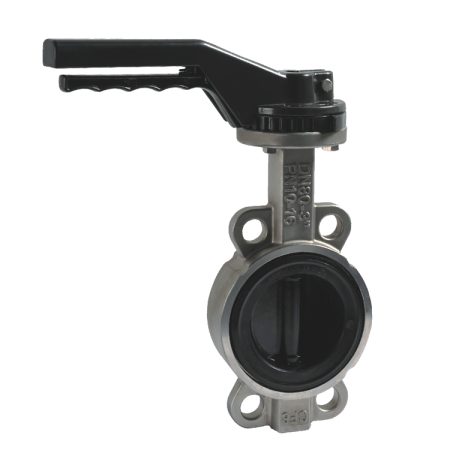
Recap the main points of the blog post
In recap, this blog post highlights the importance of pneumatic butterfly valve handle design in affecting its performance and user experience. The main points discussed include the choice of handle materials and their impact on durability, corrosion resistance, and suitability for specific applications; the significance of ergonomics in ensuring comfortable and efficient operation; the influence of handle design on operation and maintenance, with emphasis on accessibility, visibility, and durability; and the role of aesthetics and branding in shaping user perception and satisfaction. By understanding these critical aspects and making informed decisions, users can optimize the performance of their fluid control systems and achieve success in their operations.
Emphasize the importance of valve handle design in achieving optimal performance and safety in fluid control systems
The importance of valve handle design in achieving optimal performance and safety in fluid control systems cannot be overstated. A meticulously designed handle not only ensures ease of operation, but also contributes to the overall reliability and longevity of the system. By focusing on factors such as material selection, ergonomics, accessibility, visibility, and aesthetics, manufacturers can create valve handles that cater to the diverse requirements of various industries and applications. An ergonomic and user-friendly handle design enables operators to maintain precise control over the valve adjustments, reducing the risk of errors and accidents. In essence, a well-thought-out butterfly valve handle design plays a crucial role in optimizing system performance, ensuring safety, and enhancing user satisfaction, ultimately contributing to the success of fluid control operations across various sectors.
Encourage readers to carefully evaluate their valve handle options and select the ideal design based on practical and aesthetic considerations
It is imperative for readers to carefully evaluate their valve handle options and select the ideal design based on both practical and aesthetic considerations. By taking the time to assess factors such as material durability, ergonomics, accessibility, and visibility, users can ensure that the chosen valve handle aligns with the specific requirements of their fluid control systems. Furthermore, incorporating aesthetic elements that reflect the brand’s identity and values can positively influence user perception and satisfaction. A well-rounded approach to selecting valve handles, which combines functionality and visual appeal, will ultimately contribute to the optimization of system performance, enhanced safety, and long-term success in fluid control operations. So, when choosing a butterfly valve handle, remember to weigh all these aspects and make an informed decision that best suits your needs.


